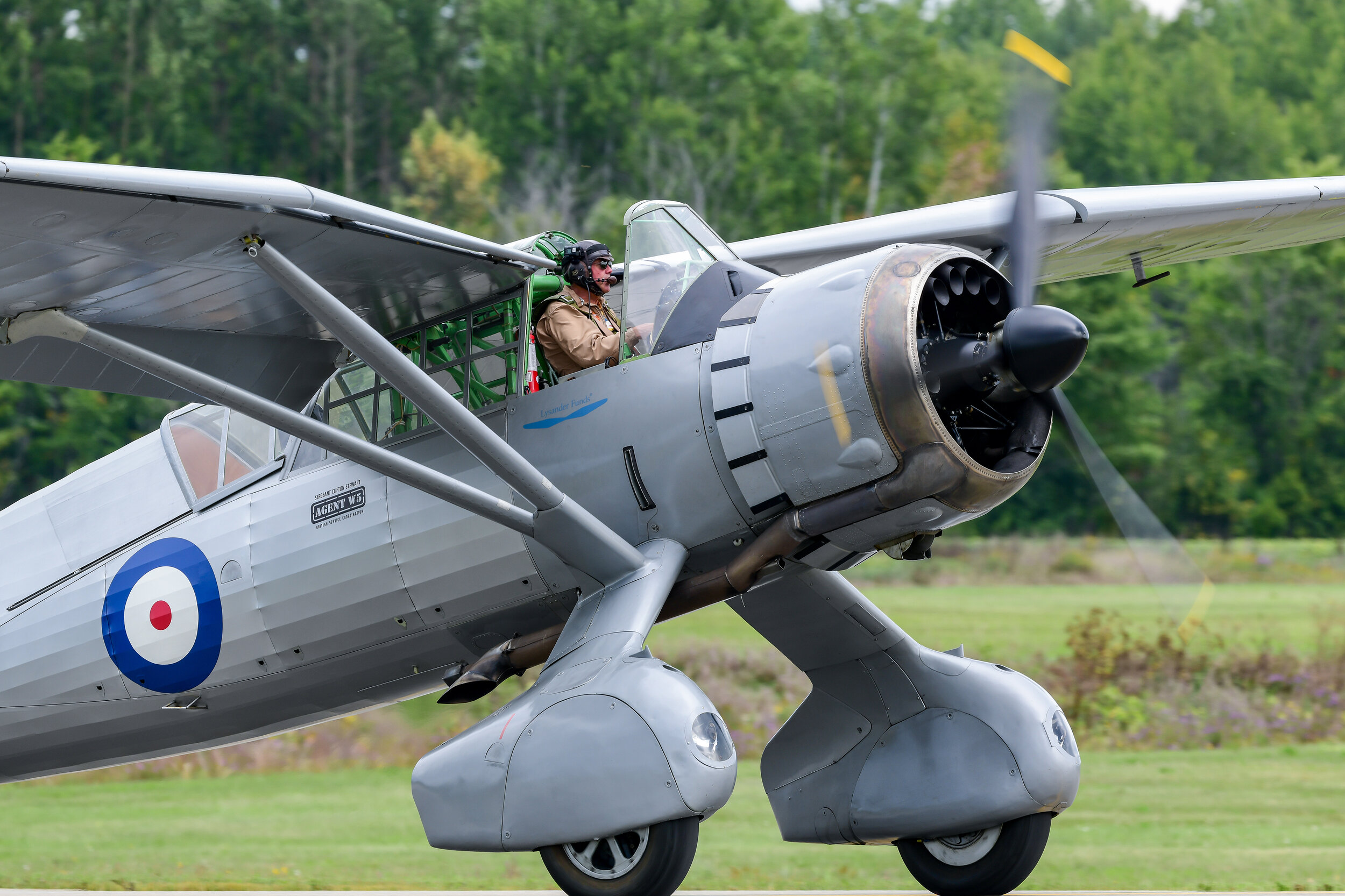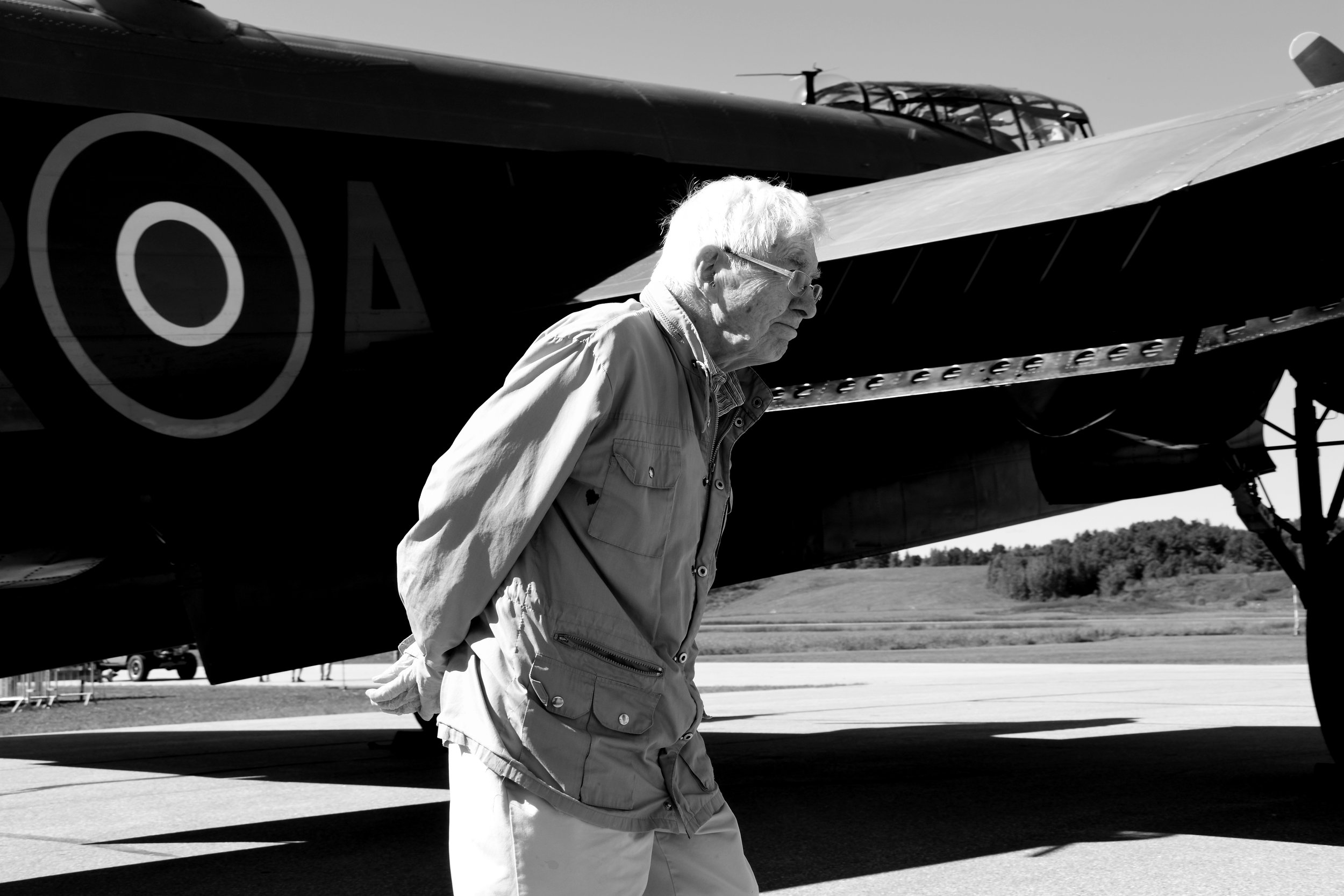
The Squadron Leader Andy Carswell
WESTLAND LYSANDER III
GUS CORUJO (GUSAIR) PHOTO
Owned and Operated by Lysander Funds Ltd
National Steel Car-built Westland Lysander III
Andrew Gordon Carswell, AFC was a Royal Canadian Air Force Avro Lancaster pilot who was shot down near Berlin on his fourth mission in 1943. After returning to Canada after the war, he rejoined the RCAF in 1948 as a search and rescue pilot flying Consolidated Canso flying boats off the coast of British Columbia. During this time he was involved in two famous rescues, including one in 1956 that won him the Air Force Cross which was presented personally by Elizabeth II. He later joined the Ministry of Transport and prepared a 1977 report on the shockingly poor quality of service and training of bush plane pilots operating in northern Ontario. The report led to the reformation of the Ministry's inspection bureaus and, ultimately, the formation of the Transportation Safety Board of Canada.
Designed as an army co-operation aircraft, the Lysander equipped six RAF squadrons in France for artillery spotting, reconnaissance and other communications tasks during the first year of the war. This role would largely disappear with the fall of France, but the Lysander would go on to become a remarkable multi-role aircraft. Many Lysanders were converted to target tugs helping to train anti-aircraft gunners in Britain. Others, fitted with air-droppable life rafts, formed the RAF's first air/sea rescue squadrons. Working with fast motor launches to within a mile of the enemy's coastline, Lysanders helped rescue hundreds of downed airmen. Today, the Lysander is largely remembered for a dangerous clandestine role they filled. Using their superb short take-off and landing (STOL) capabilities, unarmed Lysanders were operated in and out of unprepared fields, pastures, and forest clearings in the dark of night to pick-up secret agents and saboteurs from occupied-Europe.
Selected to equip the RCAF's army co-operation squadrons in 1938, 225 Lysanders were built under license by National Steel Car at Malton, just west of Toronto. Like their British cousins, many of the RCAF's Lysanders were later converted to target tugs. Painted in distinctive yellow and black stripes for visibility, Lysanders were operated by all of the British Commonwealth Air Training Plan's (BCATP) Bombing and Gunnery Schools in Canada. Postwar, four Lysanders were used for crop spraying in Alberta.
Peter Handley Photo
Gus Corujo Photo
Gus Corujo Photo
Gus Corujo Photo
Gus Corujo Photo
Gus Corujo Photo
André Laviolette Photo
Andy Carswell during Elementary Flying Training
The Andy Carswell Lysander is painted in the markings of the first Lysander to come off the assembly line at National Steel Car in Malton, Ontario during the Second World War.
LAC Andrew Carswell, RCAF after enlistmnet.
Flight Lieutenant Andy Carswell receives the Air Force Cross from Queen Elizabeth II in 1958
Andy Carswell at Vintage Wings of Canada. Pierre Lapprand Photo
Andy Carswell and an old friend. Pierre Lapprand Photo
André Laviolette Photo
André Laviolette Photo
Peter Handley Photo
Peter Handley Photo
Peter Handley Photo
Andy Carswell with Vintage Wings Volunteers Pierre Lapprand and Richard Lacroix. Photo via Pierre Lapprand




















